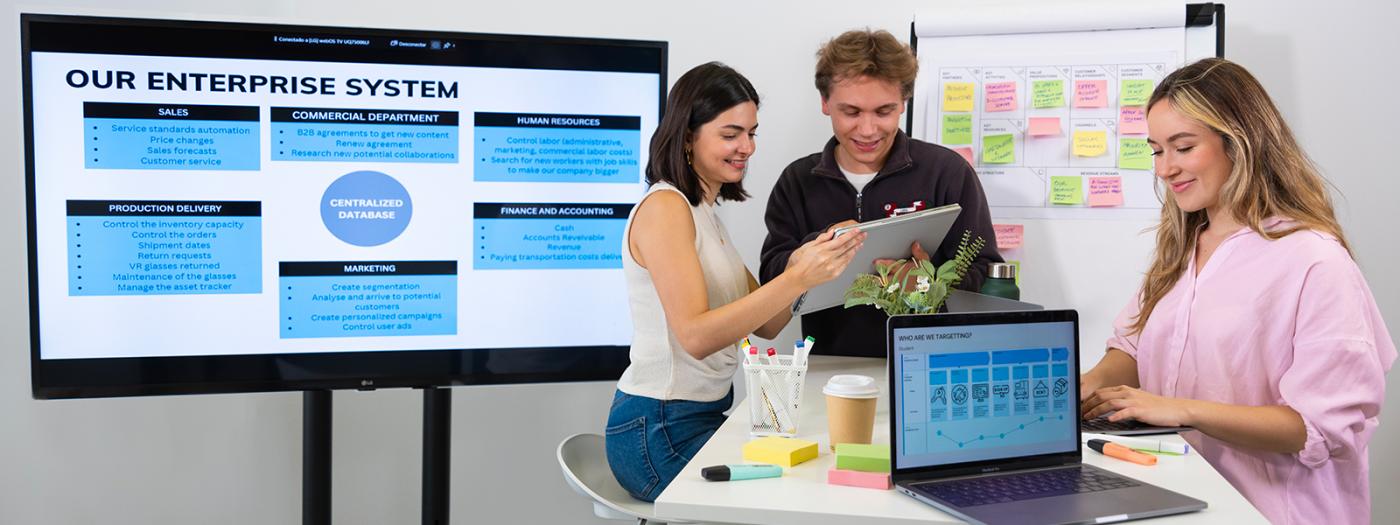Technological innovation is increasingly the source of sustainable competitive advantage for firms around the world. However, building an organization to successfully and repeatedly bring technological innovations to market is a daunting managerial challenge. In this course we focus on the practices and processes that managers use to manage innovation effectively. We will work on a human perspective, understanding your own creativity and skills as well as those of users; and a strategic perspective, looking at tools, techniques, and processes to create and manage innovation.
Titular Professors
Professors
By the end of the course the students will develop skills in:
- Understand the concepts creativity, invention, imagination, and innovation
- Understand the main tools used for creative problem solving
- Understand concepts related to idea generation and evaluation
- Understand various types of innovation including:
- Disruptive innovation and Incremental Innovation
- Open innovation
- Blue Ocean Strategy
- Innovation Culture
- User innovation and lead user research
- Innovation Adoption and Diffusion and Strategic Roadmaps
- Understand the practical implications for bringing innovations to market
CREATIVITY
Topics
1 - Introducing students to the course and reviewing the assessments and evaluation criteria
2 - An overview of neuroscience about perception and creativity
3 - How to push to connect new ideas (A+B=C) - How to push connecting existing ideas to create new and original ones.
4 - Creative Technique: Personal Analogy - Use this creative tool to explore the meaning of thinking differently, discovering new points of view about daily objects.
5 - Introduction Mind Maps
6 - Exploring ideas with Mind Maps
7 - Exploring ideas with Mind Maps
8 - Mind Map applied to problem-solving
9 - Random connexion, push to connect
10 - Think outside of the box, how to solve a problem (Create a song)
11 - Presentation tutoring
12 - Morphological analysis
INNOVATION IN ORGANIZATIONS
Session 1_Introduction and 10 Types of Innovation
Session 2_ Disruptive Innovation and Blue Ocean Strategy
Session 3_ Open Innovation and User Innovation
Session 4_ Platforms and ecosystem
Session 5_ Innovation adoptions and diffusion
Session 6_ Innovation culture - Creating High performance teams
Session 7_ Tutoring for Topic presentations
The course sessions will combine lectures, discussions, cases, videos, student presentations, and exercises. Students are expected to participate actively in class discussion. The students will be guided through the course by professors who will provide support to students at key moments. Classes are theoretical and practical, professors will explain necessary theory. The concepts will be applied in group work in order to deliver a class activity that should be presented at the end of each session. The groups will then receive feedback on their work.
At the middle (Midterm exam) and at the end (Final exam) of the course students have to organize in groups and will work on a presentation to apply the knowledge and theory from the course. In each session a new topic is introduced with the opportunity to do an activity to practice and learn the concepts. A major part of the grading of the course will be based on group work and presentations. Therefore group work and self-organization will be important for a successful evaluation of the course.
1. Class Attendance and Participation (12,5%) - Creativity
2. Innovation Case Studies (25%) - Innovation in Organizations
3. Class Attendance and Participation (12,5%) - Innovation
4. Topic Presentations (25%) - Innovation in organizations
5. Creative Idea Presentation (25%) - Creativity
- Von Hippel, Eric (2005) Democratizing Innovation, Cambridge, MA: MIT Press
- Kim, W.C.; Mauborgne, R. (2004). Blue Ocean Strategy: How to Create Uncontested Market Space and Make the Competition Irrelevant. Boston: Harvard Business School Press
- Parket, G., Val Alstyne, M., Choudary, S.P. (2016) Platform Revolution: How Networked Markets Are Transforming the Economy - and How to Make Them Work for You. New York: W. W. Norton & Company
- Rogers, Everett (16 August 2003). Diffusion of Innovations, 5th Edition. Simon and Schuster.
- F. Laloux. (2014) Reinventing Organizations: A Guide to Creating Organizations Inspired by the Next Stage of Human Consciousness. Nelson Parker
